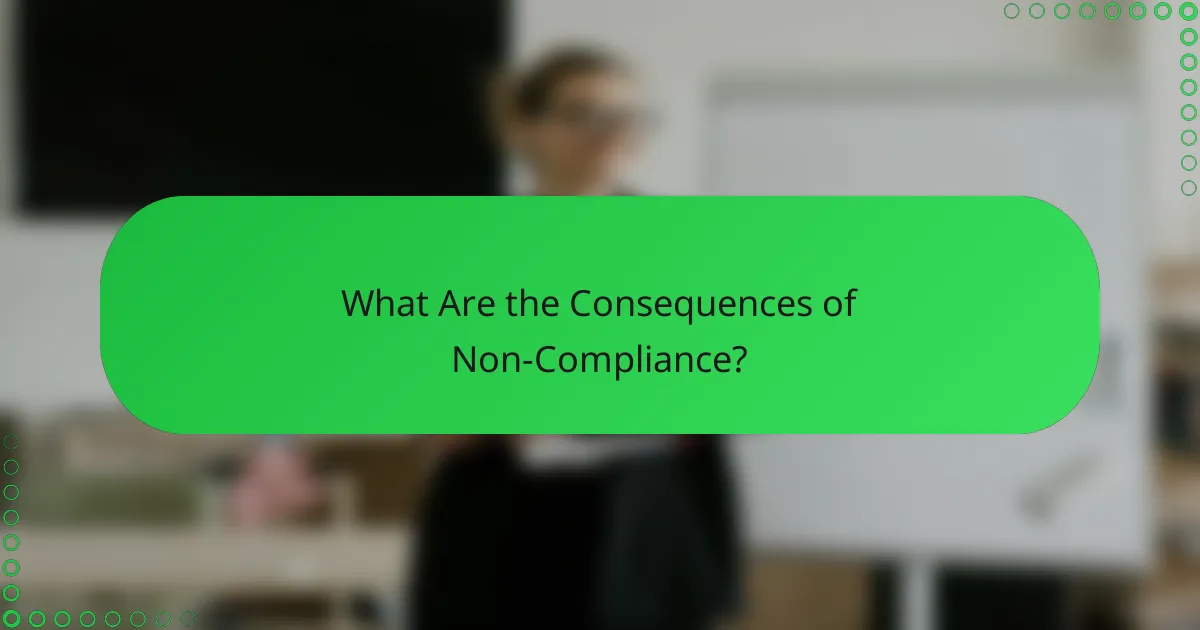User data protection is essential in today’s digital landscape, requiring a blend of technical measures and organizational practices to secure sensitive information. Regulations play a critical role in shaping these strategies, establishing legal frameworks that prioritize user privacy and dictate the responsible handling of personal data. For those interested in enhancing their understanding of this topic, exploring Cloud Gaming Security and Privacy can provide valuable insights. By adhering to key principles of data privacy, organizations can foster trust and ensure compliance while effectively managing user information.

What Are Effective User Data Protection Strategies?
Effective user data protection strategies involve a combination of technical measures and organizational practices designed to safeguard sensitive information. These strategies help mitigate risks associated with data breaches and ensure compliance with relevant regulations.
Data Encryption Techniques
Data encryption techniques protect user data by converting it into a format that is unreadable without a decryption key. Common methods include symmetric encryption, where the same key is used for both encryption and decryption, and asymmetric encryption, which uses a pair of keys. Implementing encryption for data at rest and in transit is crucial for maintaining confidentiality.
For example, using AES (Advanced Encryption Standard) with a key length of at least 256 bits is widely recommended for securing sensitive information. Additionally, employing SSL/TLS protocols for data in transit ensures that information exchanged over the internet remains secure.
Access Control Measures
Access control measures regulate who can view or use information within an organization. Implementing role-based access control (RBAC) ensures that users have access only to the data necessary for their job functions. This minimizes the risk of unauthorized access to sensitive data.
Organizations should regularly review access permissions and employ multi-factor authentication (MFA) to enhance security. MFA adds an extra layer of protection by requiring users to provide two or more verification factors before gaining access to sensitive information.
Regular Security Audits
Regular security audits are essential for identifying vulnerabilities and ensuring compliance with data protection regulations. These audits involve systematic evaluations of an organization’s security policies, procedures, and controls. They help detect weaknesses before they can be exploited by malicious actors.
Conducting audits at least annually, or after significant changes to systems or processes, is advisable. Utilizing third-party auditors can provide an objective assessment and help organizations stay updated on best practices and regulatory requirements.
Employee Training Programs
Employee training programs are critical for fostering a culture of data protection within an organization. These programs should educate staff on data privacy policies, security protocols, and the importance of safeguarding user information. Regular training sessions help reinforce good practices and keep employees informed about emerging threats.
Incorporating real-life scenarios and simulations can enhance the effectiveness of training. Organizations should also provide ongoing training to address new risks and ensure that employees remain vigilant against potential data breaches.
Incident Response Plans
Incident response plans outline the steps an organization should take in the event of a data breach or security incident. A well-defined plan enables quick and effective responses, minimizing damage and restoring normal operations. Key components include identification, containment, eradication, recovery, and lessons learned.
Organizations should regularly test and update their incident response plans to ensure they remain effective. Involving all relevant stakeholders, including IT, legal, and communications teams, is crucial for a coordinated response during an incident.

How Do Regulations Impact User Data Protection?
Regulations significantly shape user data protection by establishing legal frameworks that organizations must follow to safeguard personal information. These laws dictate how data is collected, stored, and shared, ensuring that user privacy is prioritized and maintained.
General Data Protection Regulation (GDPR)
The General Data Protection Regulation (GDPR) is a comprehensive data protection law in the European Union that came into effect in 2018. It mandates that organizations obtain explicit consent from users before processing their personal data and grants individuals rights over their information, such as the right to access and delete data.
Organizations must implement strict data handling practices, including data minimization and security measures, to comply with GDPR. Non-compliance can result in hefty fines, often reaching up to 4% of annual global revenue or €20 million, whichever is higher.
California Consumer Privacy Act (CCPA)
The California Consumer Privacy Act (CCPA) is a state law that enhances privacy rights for residents of California. Effective from 2020, it allows consumers to know what personal data is being collected about them and gives them the right to request deletion of their data.
Businesses must provide clear disclosures about data collection practices and offer consumers the option to opt-out of data selling. Fines for violations can reach up to $7,500 per intentional violation, emphasizing the importance of compliance for businesses operating in California.
Health Insurance Portability and Accountability Act (HIPAA)
The Health Insurance Portability and Accountability Act (HIPAA) is a U.S. regulation that protects sensitive patient health information from being disclosed without the patient’s consent. It applies to healthcare providers, insurers, and their business associates, requiring them to implement safeguards for data security.
HIPAA mandates that organizations conduct risk assessments and establish protocols for data access and sharing. Violations can result in significant penalties, ranging from $100 to $50,000 per violation, depending on the severity and intent, making adherence critical for healthcare entities.

What Are the Key Principles of Data Privacy?
The key principles of data privacy focus on protecting individuals’ personal information while ensuring its responsible use. These principles guide organizations in managing data securely and ethically, fostering trust and compliance with regulations.
Data Minimization
Data minimization involves collecting only the personal information that is necessary for a specific purpose. This principle reduces the risk of data breaches and limits exposure of sensitive information. Organizations should regularly review their data collection practices to ensure they align with this principle.
For example, a company should avoid asking for unnecessary details like a user’s social security number if it is not essential for the service provided. Implementing data minimization can lead to a more efficient data management process and lower compliance costs.
Purpose Limitation
Purpose limitation requires that personal data be collected for legitimate, specified purposes and not used beyond those intentions. This principle ensures that individuals are aware of how their data will be used, which enhances trust and accountability.
For instance, if a business collects email addresses for a newsletter, it should not use those addresses for unrelated marketing campaigns without obtaining additional consent. Organizations should clearly communicate the purposes of data collection at the time of data gathering.
Transparency and Consent
Transparency and consent emphasize the need for organizations to be open about their data practices and to obtain explicit permission from individuals before processing their personal information. This principle empowers users to make informed decisions regarding their data.
Companies should provide clear, accessible privacy notices that outline what data is collected, how it will be used, and the rights individuals have regarding their data. Obtaining consent should be straightforward, allowing users to opt-in or opt-out easily, thereby fostering a culture of respect for personal privacy.

How Can Organizations Ensure Compliance?
Organizations can ensure compliance with user data protection regulations by implementing systematic strategies that include regular audits, clear privacy policies, and comprehensive staff training. These measures help mitigate risks and enhance trust with users.
Regular Compliance Audits
Conducting regular compliance audits is essential for organizations to assess their adherence to data protection regulations. These audits should evaluate data handling practices, identify vulnerabilities, and ensure that policies are being followed effectively.
Organizations can schedule audits quarterly or biannually, depending on their size and the complexity of their data operations. Utilizing third-party auditors can provide an objective perspective and highlight areas for improvement.
Implementing Privacy Policies
Clear and comprehensive privacy policies are crucial for informing users about how their data is collected, used, and protected. These policies should be easily accessible and written in straightforward language to ensure user understanding.
Organizations should regularly review and update their privacy policies to reflect changes in regulations or business practices. Including sections on user rights, data retention, and breach notification procedures can enhance transparency and compliance.
Training Staff on Regulations
Training staff on data protection regulations is vital for fostering a culture of compliance within the organization. Employees should understand the importance of data privacy and their specific responsibilities in protecting user information.
Regular training sessions, workshops, and updates on regulatory changes can help keep staff informed. Organizations may consider using practical scenarios and role-playing exercises to reinforce learning and ensure that employees can apply their knowledge effectively.

What Are the Consequences of Non-Compliance?
Non-compliance with user data protection regulations can lead to significant legal and financial repercussions, as well as damage to an organization’s reputation. Companies may face hefty fines and loss of customer trust, which can have long-lasting effects on their operations.
Legal Penalties
Legal penalties for non-compliance can vary widely depending on the jurisdiction and the specific regulations violated. In the European Union, for instance, companies may face fines up to 4% of their annual global revenue under the General Data Protection Regulation (GDPR). In the United States, penalties can range from thousands to millions of dollars, depending on the severity of the violation.
Organizations should be aware of the specific laws applicable to their operations, as different countries have different enforcement mechanisms. Regular audits and compliance checks can help mitigate risks associated with legal penalties.
Reputation Damage
Reputation damage is a critical consequence of non-compliance that can affect customer loyalty and brand perception. A data breach or regulatory violation can lead to negative media coverage, which can deter potential customers and partners. Companies may find it challenging to regain public trust after such incidents.
To protect their reputation, businesses should prioritize transparency and effective communication with stakeholders regarding data protection practices. Implementing robust security measures and promptly addressing any compliance issues can help maintain a positive image in the marketplace.
